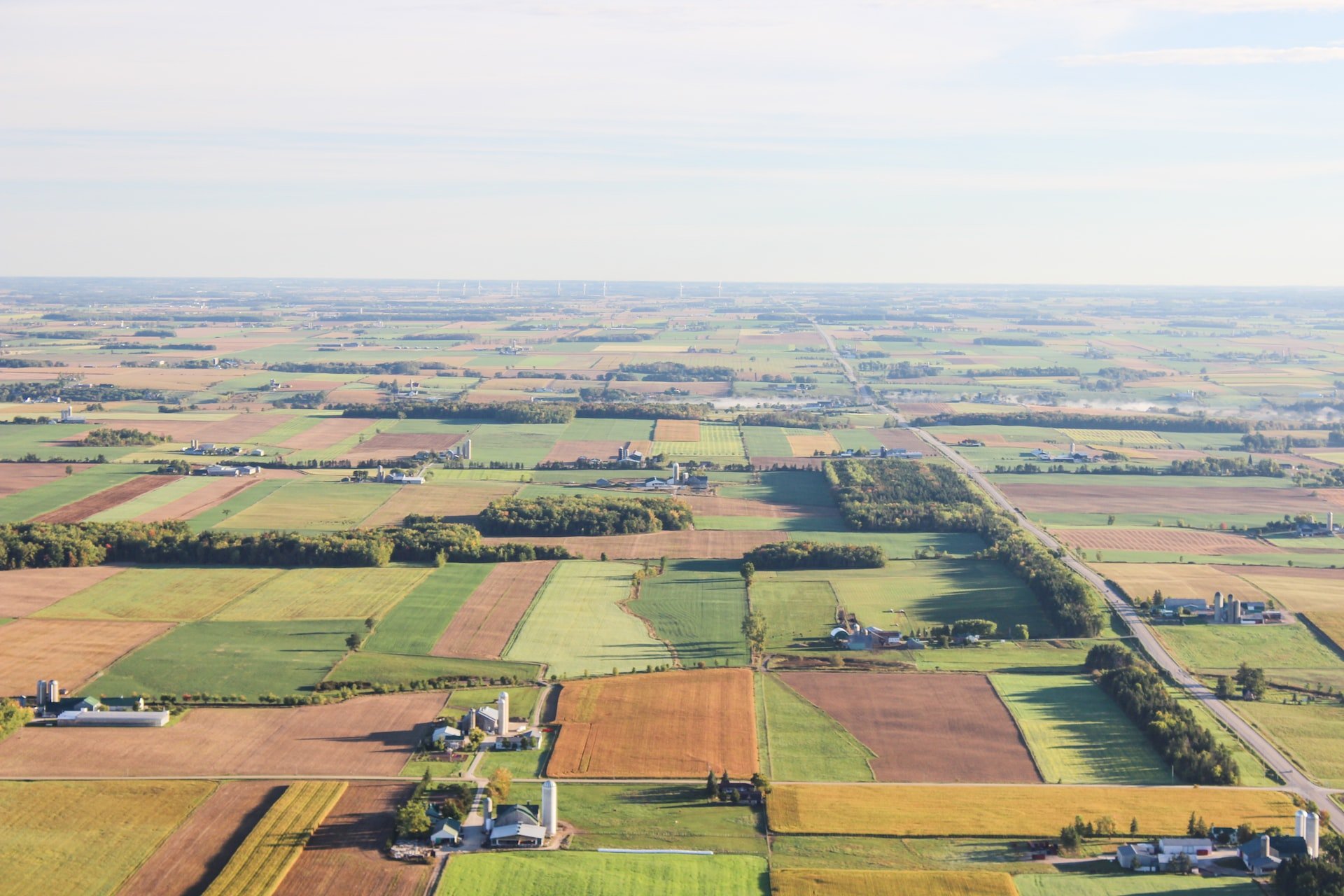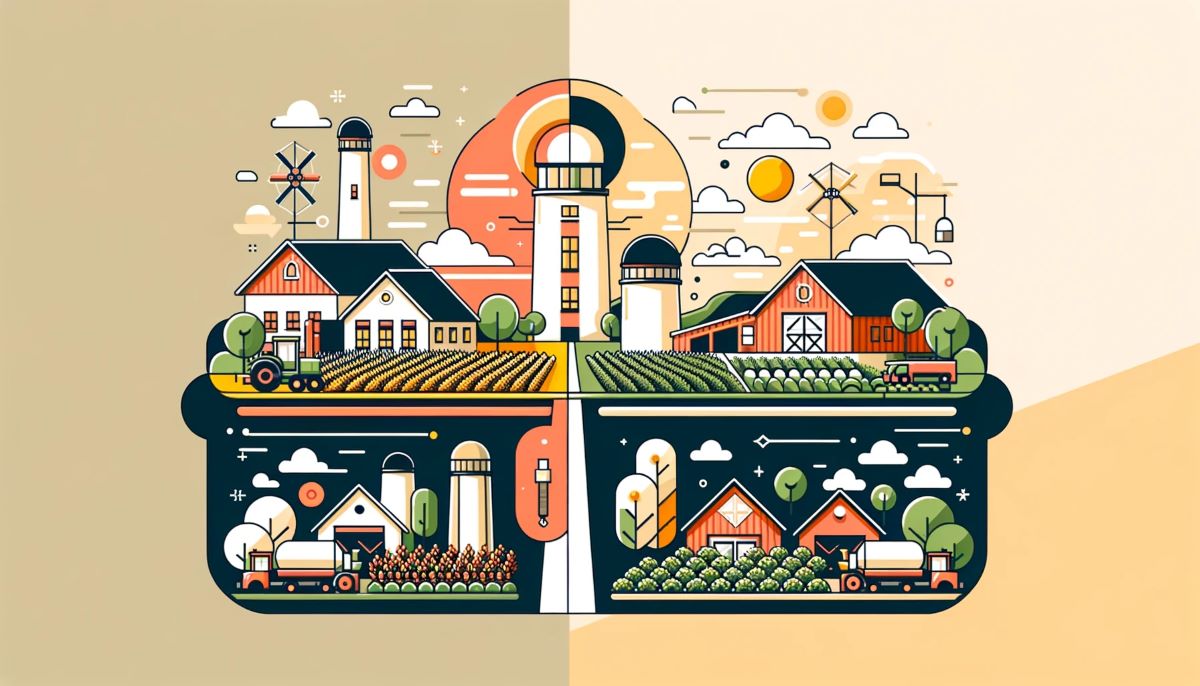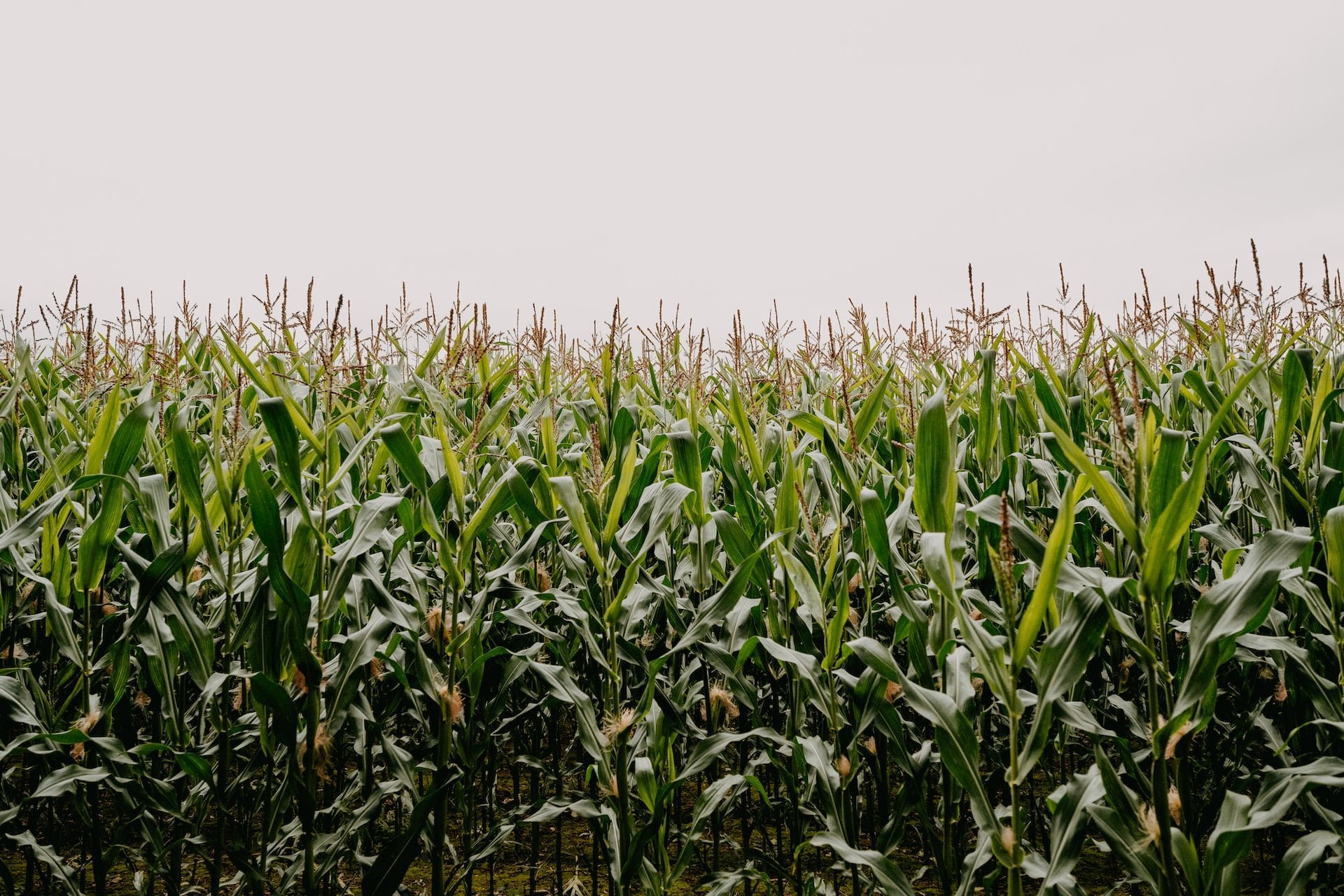Do you want to invest in farmland as an alternative investment option that can provide uncorrelated returns, cash yield, diversification, and a hedge against inflation? If so, find out whether AcreTrader vs FarmTogether is the right choice for your initial investments.
Introducing These Two Farmland Investing Platforms
Farmland is far from the most mainstream type of fractional investment. As an asset class it offers the opportunity to profit from some powerful tailwinds – the limited supply of land that can be used for productive agriculture and the growing demand for food from a rising population. AcreTrader and FarmTogether are the two leading platforms for investing in farmland fractionally.
Similarities – AcreTrader Vs FarmTogether
Before we dive into the differences between these platforms, let’s review the similarities between them first.
Summary – AcreTrader Vs FarmTogether
Now that we understand the similarities between the two, let’s see how they compare against each other on a high-level.
investment platforms


Overall, both of these platforms offer accredited investors opportunities to fractionally invest in farmland deals. They have similar investment processes, minimum investments, and both lack a secondary market.
There are also a lot of differences between these two popular farmland investing platforms and each has something to offer. We hope that this article will help you decide whether FarmTogether vs AcreTrader is the right place to get started.
Differences – AcreTrader Vs FarmTogether
While there are a lot of similarities between these two platforms, there are a variety of very important differences that investors should consider. We’ll go through a few in detail below.
Types Of Assets
AcreTrader has a wider selection of assets than FarmTogether. While both platforms have opportunities for crop-based land investment, AcreTrader also offers timberland opportunities.
Timberland has some overlap and distinction from farmland. They have similar tailwinds, but the characteristics of the plants are different. To make money from timberland, you generally have to cut down and sell the trees. After the trees have been cut, no new value will be created until a new tree is regrown.
However, timber has more optionality when it is sold. As trees get taller and wider, they tend to grow in value. This means that if the timber market is bad in one particular year, the manager can choose to wait until the next year. The trees and the land will become more valuable while searching for the right time to sell the lumber.
Types Of Investment Products
FarmTogether has a wider range of investment products. While both platforms support fractional investment through crowdfunded offerings, FarmTogether also has options to invest through a Sustainable Farmland Fund, a bespoke program for sole ownership, and a 1031 exchange.
The bespoke program and 1031 exchanges are only for very wealthy customers, requiring a $3M and $1M minimum investment, respectively. For any accredited investor that is also a US person, for $100K they can make a single passive investment into a diversified portfolio of farmland across the US.
Deal Flow
AcreTrader offers a more consistent flow of new deals onto the platform. Since September 1 of 2022, AcreTrader has had more than 5 times the number of farmland deals than FarmTogether.
That having been said, it can be much more competitive to secure shares in many of AcreTrader’s farmland and timberland offerings.
Fees
Comparing fees between the two platforms is tricky. In both cases the types of fees charged are similar and the amounts vary between offerings.
In general, row crop offerings have the simplest operations, simplest deal structures, and least use of leverage, so they would be the easiest to compare. However, FarmTogether has relatively few row crop offerings. Another challenge is that both platforms remove access to the financial information for a deal once it has been closed.
That having been said, we were able to find information for two row crop deals to compare. It’s not a perfect comparison though. While the crops are the same, the regions are different, and the timing is different as well. This (potentially) matters a lot as the interest rate and market environments have changed significantly over the past year.
In our comparison we’re using the Shiloh Farm offering from AcreTrader and the Pioneer Farm crowdfunding offering from FarmTogether. Here’s how the fees break down:
- Shiloh
- Farm Management Fee, a one-time fee of 0.75% of the offering
- An annual management fee of 0.75% of the land value
- Pioneer
- A one-time fee of 0.5% of the purchase price
- An ongoing fee of 20% of gross rent revenue
These are actually very different approaches to the fees.
Both charge up-front fees, but FarmTogether’s is 33% lower than AcreTrader’s. These are one-time fees. Each platform also charges an ongoing fee of some kind, though they are different in nature.
AcreTrader’s management fee is based on 0.75% of the assessed land value. That value can be reassessed at any point. If the land value goes down, the fee isn’t likely to change. The Operating Agreement lays out the fee is based on the higher of the assessed value or the purchase price plus improvements.
However, if the land value goes up in a reassessment, so too will the fees paid. Investors will also be on the hook for the costs associated with the appraisal being performed. The Operating Agreement also has an entire section about how cases of the Managers feeling the fair value for the land is higher than the appraised value will be handled. Basically, the price could be up to 10% higher than the original appraised value and there may be an additional appraisal that happens – the costs of which we again expect will be passed to investors.
In the case of the FarmTogether offering, the ongoing fee comes from rent revenue, which is a fixed payment for the lifetime of the deal. The expected yield over the 10 year term of the investment is 2.3%. We can calculate that, before fees, the yield would be 2.875%. This makes FarmTogether’s take effectively equivalent to 0.575%.
For this imperfect comparison, we believe FarmTogether wins on the fees. The one-time initial fee is lower, the ongoing fees are lower, and the ongoing fees are also far more predictable.
All that having been said, AcreTrader’s financial models expect to provide 48% more yield at the start of the Shiloh investment than the Pioneer farm. This may be because AcreTrader is also renting out grain storage facilities to the farmland operators, in addition to the land.
As we said, the comparison is imperfect and not straightforward. It’s truly not clear on an opportunity-by-opportunity basis which platform will always be best. We recommend always doing your due diligence and scrutinizing the details closely. As we’ll see below, the platform you use ultimately may be dictated by what you want to invest in.
Offerings
These two farmland crowdfunding platforms differ significantly when it comes to the offerings they’ve had available thus far.
FarmTogether provides predominantly permanent crop investment opportunities. Only 16% of their offerings have been for row crops, which is also reflected in where those offerings have been.
FarmTogether has had a heavy focus on California, which is the sole US producer of a variety of specialty crops like almonds. It’s also why it’s not surprising to see Oregon, Oklahoma, and Washington prominently in their offerings as well.
When we look at AcreTrader, it’s almost the opposite. They are overwhelmingly offering row crop deals (90%), with a bit of timberland (7%), and a small presence of permanent crops (3%).
As with FarmTogether, we see the choice of crop offerings also reflected in the locations of the farmland.
Lastly, you can see the differences between the crops grown on the farmland offerings from the two platforms. While 61% of crops in AcreTrader offerings are corn or soybeans, FarmTogether has a more balanced range of crops.
Note: there are too many entries to turn on the labels or legend for the graphs, but you can hover for more information!
The differences in offerings between these two platforms are more than just fun facts. Row and permanent crops have very different characteristics for deal structure, returns, and risks. To greatly oversimplify the differences between the two:
- Row crops offer lower risks. Crops are always at the risk of the weather. Since row crops are replanted each year, the impact of any rare, adverse weather circumstances is limited.
- Permanent crops offer returns that are more yield-oriented and typically have more complex deal structures to allow participants to participate in the upside from crop sales. This includes things like crop-sharing agreements between the farmland investors and the farm operators.
- Row and permanent crops grow in different regions of the country. This also means they face different levels of risk from things like heat, fire, and water scarcity.
AcreTrader Vs FarmTogether Track Record
The deals offered by both platforms almost always have long target holding periods – around 10 years. Since neither company has been around for 10 years, that means that there haven’t been many exits. The only platform that currently has any is AcreTrader. Here’s what their 5 exits returned:
- IA Corn and Soybean Farm – 23.3% IRR after 1.7 years
- IL Corn and Soybean Farm – 30.3% IRR after 2.5 years
- MS Corn and Soybean Farm – 11.5% IRR after 1.6 years
- MS Rice and Soybean Farm – 13.7% IRR after 2.2 years
- CA Alfalfa and Carrot Farm – 15.5% IRR after 1.4 years
Two of those had target hold periods of 3-5 years while the others had targets of 5-10 years. These were all fairly early exits, likely due to strong purchase offers that came in. This does show that AcreTrader is connected enough to the farmland investing and purchasing community to get exposure to such offers, even if they’re not actively trying to sell land.
While 5 early exits is not a lot of data to go on, it’s still enough to give AcreTrader something of a track record.
Minimums
FarmTogether has a very straightforward minimum investment structure. Crowdfunded offerings are $15K, the Sustainable Farmland Fund is $100K, Sole Ownership Bespoke is $3M, and 1031 Exchanges are $1M. Always and for all opportunities.
AcreTrader’s minimums vary greatly by offering. There have been a few opportunities with minimums below $8,500, but they are very rare. Sometimes there are opportunities between $10K and $15K, typically around $12K-$13K. There are also many that are $15K or $25, with a rare few also having higher minimums.
We won’t declare a winner here. With FarmTogether, you always know what to expect when you see a new opportunity. There’s value in that. With AcreTrader, you’ll never really know how much is required for opportunity until you look. Sometimes that gives you a chance to invest below FarmTogether’s $15K benchmark, but oftentimes it is at the same level or higher. So, if you’re looking to get into farmland for less than $15K, keep an eye on all the AcreTrader offerings and one will eventually come your way.
Learn More About Farmland Investing
If you would like to learn more, take a look at some of our other resources:

Introduction To Farmland
New to the asset class? This is a very approachable introduction with links to other resources.



